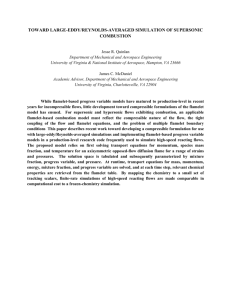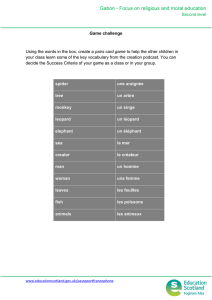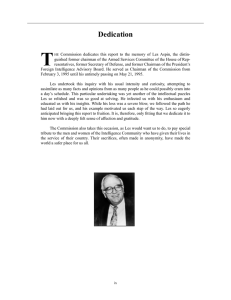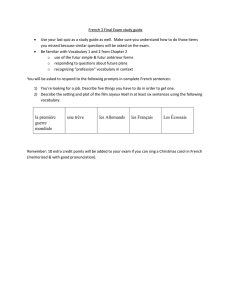Bing Hu Modeling Turbulent Non-premixed Combustion using Large Eddy Simulation
advertisement
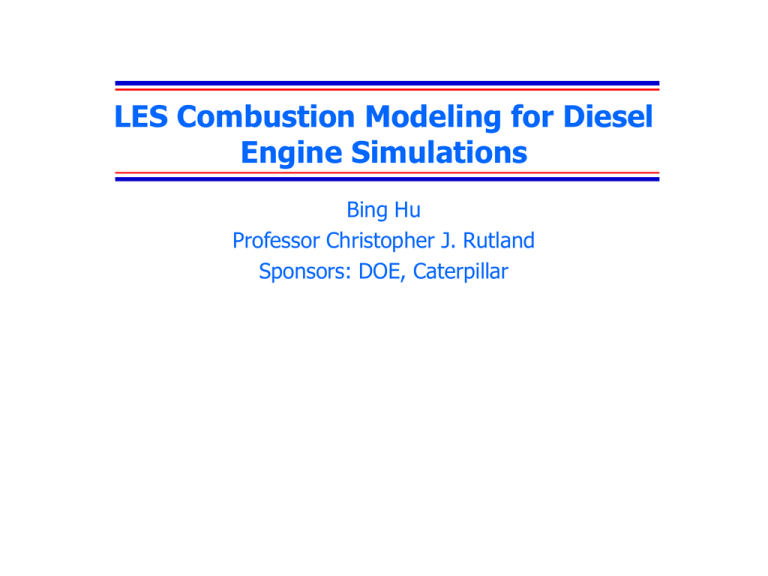
LES Combustion Modeling for Diesel Engine Simulations Bing Hu Professor Christopher J. Rutland Sponsors: DOE, Caterpillar Background Motivation Better predictive power: LES is potentially capable of capturing highly transient effects and more flow structures New analysis capability: LES is more sensitive to initial and boundary conditions than RANS such that it is better suitable for studying cyclic variations and sensitivity to design parameters. Primary components Turbulence model: a one-equation non-viscosity model called dynamic structure model for subgrid scale stresses Scalar mixing models: a dynamic structure model for subgrid scale scalar flux and a zero-equation model for scalar dissipation Combustion model: a flamelet time scale model 2 Large Eddy Simulations Actual u u Spatial filtering ui ui ui LES averaged u Filtering of non-linear terms in Navier-Stokes equations results in subgrid scale terms needed to be modeling ij ui u j ui u j RANS averaged u x Smagorinsky model Dynamical structure model use eddy viscosity one equation model k: sub-grid turbulent kinetic energy Cij :dynamically determined tensor coefficient ij ij cij k t Sij 3 Flamelet Time Scale Combustion Model Overview Flamelet mixture fraction approach: each species is a function of mixture fraction and stretch rate , this functional dependence is solved using a 1-D flamelet code prior to the CFD computation Yi Yi ( , ) Use probability density function (PDF) to obtain mean values q 1 Yi * Y ( , ) P( , )d d i 0 0 Modification for slow chemistry using a time scale Yi Yi * Y i t Additional features PDF of mixture fraction is constructed from its first and second moment which are solved from LES transport equations LES sub-grid model for scalar dissipation helps to construct PDF of stretch rate 4 Jet Flame Tests (Sandia Jet Flames) • • • • • • Sandia piloted flames are simulated to validate models A coarse grid is used: 15cm x 15cm x 60cm, about 230,000 cells Instantaneous temperature fields are presented below Black curves represent stoichiometric mixture fraction Reynolds number at fuel jet for flame D = 22,400 Reynolds number at fuel jet for flame E = 33,600 flame D A Relatively stable flame 5 flame E Significant local extinctions result in lower temperature Engine Test Case (Caterpillar Diesel Engine) bore X stroke (mm) Displacement volume (L) Compression ratio Engine speed (rpm) % Load START OF INJECTION -9 ATDC Duration of injection (degree) 137.6 X 165.1 2.44 15.1 1600 75 21 12 Pressure [MPa] Cylinder 11 Experiment 10 Simulation 9 8 7 6 5 4 Mixture fraction variance -10 -5 0 5 10 15 20 25 30 35 40 o C A [ ATDC ] 470 Heat Release [J/Degree] Mixture fraction Experiment Simulation 370 270 170 70 -30 -10 6 -5 0 5 10 15 20 CA [o ATDC] 25 30 35 40 Summary and Future Work A flamelet time scale combustion model was integrated with LES dynamical structure turbulence and scalar mixing models Model results agreed well with experiments of jet flames and a diesel engine More accurate spray models are to be integrated with LES turbulence and scalar mixing models More precise initial and inflow conditions are to be generated for LES simulations 7
